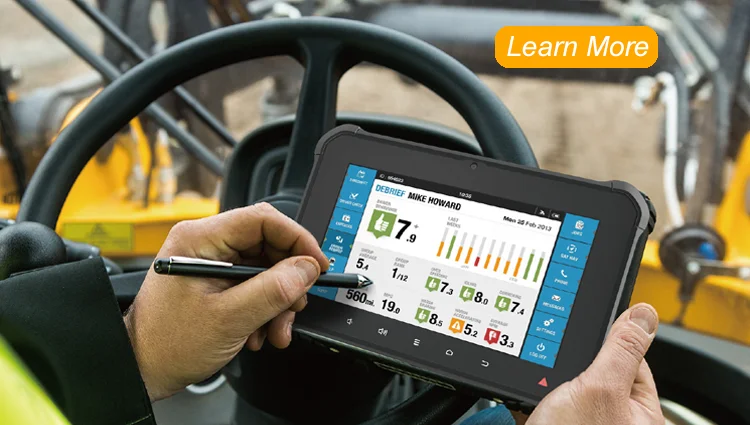In-vehicle computers are revolutionizing the automotive industry, offering a myriad of benefits that enhance the driving experience. From navigation to autonomous driving, these systems are pivotal in modern vehicles. This guide will explore the evolution, key features, applications, and future trends of in-vehicle computing.
- What Are In-Vehicle Computers?
- Key Features of Modern In-Vehicle Computers
- Applications of In-Vehicle Computers
- Technical Specifications
- Software Solutions
- Benefits of Using In-Vehicle Computers
- Challenges and Considerations
- Future Trends in In-Vehicle Computing
- Choosing the Right In-Vehicle Computer
- Installation and Maintenance
- The Role of In-Vehicle Computers in Smart Cities
- Conclusion
What Are In-Vehicle Computers?
An in-vehicle computer is a specialized computing system designed to operate within the unique environment of a vehicle. Unlike traditional desktops or laptops, these computers are built to withstand extreme temperatures, vibrations, and other harsh conditions.
The Evolution of In-Vehicle Computers From basic navigation and diagnostics to real-time data processing and advanced connectivity, in-vehicle computers have come a long way. This section will trace the technological advancements that have propelled these systems to new heights.
Key Features of Modern In-Vehicle Computers
- Durability and Rugged Design: Ensuring longevity in challenging automotive environments.
- Real-time Data Processing: Crucial for autonomous driving and real-time traffic updates.
- Connectivity and Communication: Equipped with Wi-Fi, Bluetooth, and cellular networks for seamless data exchange.
Applications of In-Vehicle Computers
- Navigation and GPS: Advanced systems with real-time traffic updates and augmented reality overlays.
- Infotainment Systems: Enhancing passenger experience with streaming services and media playback.
- Fleet Management: Improving operational efficiency through vehicle monitoring and driver behavior analysis.
- Autonomous Vehicles: The brain behind self-driving cars, processing sensor data for real-time decisions.
Technical Specifications
- Processors and Memory: High-performance processors and memory for complex tasks.
- Storage Solutions: Robust solutions like SSDs for fast and reliable data access.
- Input and Output Interfaces: Connectivity for sensors, displays, and peripherals through USB, HDMI, Ethernet, etc.
Software Solutions
- Operating Systems: Specialized systems like automotive-grade Linux or Android Automotive.
- Specialized Applications: Tailored apps for navigation, infotainment, and ADAS.
- Security Measures: Encryption and secure boot to protect against cyber threats.
Benefits of Using In-Vehicle Computers
- Enhanced Safety: Features like collision detection and lane departure warnings.
- Increased Efficiency: Improved route planning and reduced fuel consumption.
- Better User Experience: Advanced infotainment and connectivity for enjoyable journeys.
Challenges and Considerations
- Security Risks: The need for robust security against cyber-attacks.
- Cost Implications: The impact of advanced technology on vehicle pricing.
- Technological Limitations: Addressing processing power, storage, and connectivity limitations.
Future Trends in In-Vehicle Computing
- Integration with AI and Machine Learning: Predictive maintenance and personalized experiences.
- Advancements in Connectivity (5G): Faster data transfer and more reliable connections.
- Sustainable and Green Technologies: Developing energy-efficient solutions.
Choosing the Right In-Vehicle Computer
- Factors to Consider: Durability, processing power, connectivity, and system compatibility.
- Popular Models and Brands: Intel, NVIDIA, Advantech, and others known for reliability and performance.
Installation and Maintenance
- Best Practices for Setup: Following manufacturer guidelines and using appropriate mounting solutions.
- Maintenance and Troubleshooting: Regular updates and inspections to keep the system running smoothly.
Real-World Examples and Case Studies Success stories from various industries showcasing the impact of in-vehicle computers on operational efficiency and safety.
The Role of In-Vehicle Computers in Smart Cities
- Enhancing Urban Mobility: Contribution to traffic management and public transportation systems.
- Data Collection and Analysis: Optimizing urban planning and city infrastructure.
Conclusion
In-vehicle computers are an integral part of the automotive industry’s future, offering a wide range of benefits. As technology advances, their role in vehicles and the broader transportation ecosystem will only grow.
Q: What are the main functions of an in-vehicle computer?
A: In-vehicle computers serve a variety of functions that are critical to modern driving experiences. They manage navigation and GPS systems, provide infotainment options such as music streaming and media playback, facilitate fleet management by tracking vehicle location and driver behavior, and are essential in the operation of autonomous vehicles by processing sensor data for driving decisions.
Q: How do in-vehicle computers enhance vehicle safety?
A: In-vehicle computers enhance vehicle safety through features like collision detection, lane departure warnings, and real-time monitoring. They process data from various sensors to alert drivers to potential hazards, help maintain the vehicle in its proper lane, and provide assistance in emergency braking or collision avoidance systems.
Q: What are the key considerations when choosing an in-vehicle computer?
A: When selecting an in-vehicle computer, it’s important to consider its durability to withstand the harsh conditions of the automotive environment, its processing power to handle complex tasks, the range of connectivity options available such as Wi-Fi, Bluetooth, and cellular networks, and its compatibility with existing vehicle systems or aftermarket accessories.
Q: What advancements can we expect in the future of in-vehicle computing?
A: Future advancements in in-vehicle computing are expected to include deeper integration with artificial intelligence (AI) and machine learning for predictive maintenance and personalized user experiences. The deployment of 5G technology will improve connectivity, leading to faster data transfer rates and more reliable connections. Additionally, there will be a focus on sustainable and green technologies to develop energy-efficient in-vehicle computers.
Q: How do in-vehicle computers contribute to smart cities?
A: In-vehicle computers contribute to smart cities by providing valuable data for traffic management, which can help reduce congestion and improve public transportation systems. They also aid in data collection and analysis for urban planning, which can enhance overall city infrastructure and promote environmentally friendly transportation solutions. Furthermore, they can be integrated into broader smart city networks to optimize energy use and improve the quality of life for citizens.

